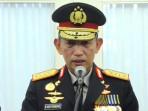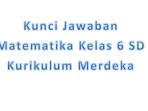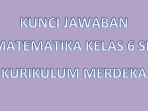Kunci Jawaban
Kunci Jawaban Bahasa Inggris Kelas 9 Halaman 177 178 179 180, Associating: Table of Analysis
Simak nih, di bawah ini kunci jawaban bahasa Inggris kelas 9 halaman 177 178 179 180, kegiatan siswa association: table analysis of material
TRIBUN-BALI.COM, DENPASAR – Simak nih, di bawah ini kunci jawaban bahasa Inggris kelas 9 halaman 177 178 179 180, kegiatan siswa association: table analysis of material.
Kunci Jawabn Bahasa Inggris Kelas 9 akan membahas soal pada chapter ke 9 yang berjudul what is it? sesuai dengan buku bahasa inggris kelas 9 kurikulum 2013 edisi revisi tahun 2018.
Kali ini kita akan membahas soal pada halaman 177 178 179 180, kegiatan siswa association: table analysis of material.
Kunci jawaban dibawah ini diharapkan bisa membantu siswa sebagai alternatif jawaban untuk menyelesaikan soal pada halaman 177 178 179 180 di buku siswa Bahasa Inggris kelas 9.
Berikut kunci jawaban dan pembahasan soal Bahasa Inggris halaman 177 178 179 180 pada chapter ke 9 sesuai dengan buku bahasa Inggris kelas 9 kurikulum 2013 edisi revisi tahun 2018 yang berjudul think locally act globally.
Baca juga: Kunci Jawaban Bahasa Inggris Kelas 10 Hal 128: The Battle of Surabaya, Mari Mengulik Grammar Review!
(Update Kunci Jawaban)
Kunci Jawaban Bahasa Inggris Kelas 9 Halaman 177 178 179 180
Halaman 177 178 179
Associating
We have learnt some texts about animals. Now we will read texts about non-living objects.
Here are what we will do. First, we will listen carefully to the teacher reading each of the texts.
Second, we will repeat the texts after the teacher, sentence by sentence. Then, in our groups, we will learn to read each text to each other.
We will say the sentence loudly, clearly and correctly.
Baca juga: Kunci Jawaban Bahasa Inggris Kelas 4 SD Halaman 132 Unit 12: Look and Write

Baca juga: Kunci Jawaban Bahasa Inggris Kelas 7 Hal 145 Chapter 7: We Love What We Do, Things In Our Classroom



Halaman 180
Associating
We will look closely at the texts by using a similar table of analysis.
Here are what we will do. We will work in group. First, we will study the example carefully.
Second, we will choose two from three texts to be analyzed. Third, we will discus to fill in the tables with the facts stated in the text, like the examples.
Then, every one of us will handwrite the analysis in our notebooks or type it on a computer.
Finally, we will learn to present our analysis of the two texts orally to each other.
We will use dictionary. We will spell the words and use the punctuation marks correctly. We will also say the sentences loudly, clearly, and correctly.
If we have any problems, we will go to our teacher for help.
1. Materials
MAIN IDEA
Class
1. A material that soaks up water well is said to be absorbent.
2. A material that resists water is said to be waterproof.
DETAILED FACTS
1. Our world is made up of many different materials.
2. Metals come from rocks.
3. Wood comes from trees.
4. Plastics and glass are made in factories.
5. Ceramics are made of mud and clay.
6. Most fabrics are made of parts of plants or animals.
7. Tissues are made of a special absorbent paper.
Characteristics
1. Some materials, such as metal, feel cold when you touch them because they draw the heat from your hand. They are said to be good thermal conductors.
2. Other materials, such as wood, feel warm to the touch.
3. They do not draw heat from your hand and are said to be good thermal insulators.
Functions: We use all these materials to build our homes and to make the things we use every day.
2. Sponge
MAIN IDEA
Class
1. There are different types of sponges.
2. Some sponges are natural and come from animals that live in warm seas.
3. Most sponges found in the house are made of rubber.
DETAILED FACTS
1. Some sponges are natural and come from animals that live in warm seas.
2. Most sponges found in the house are made of rubber.
Characteristics
1. Sponge absorbs water well. Water is held in tiny holes inside a sponge. It will only come out when the sponge is squeezed.
2. The best sponges mop up lots of water.
3. Fabrics
MAIN IDEA
Class: There are different kinds of fabrics.
DETAILED FACTS
Materials
1. Fabrics such as cotton, linen, wool and silk are made from natural fibres, which come from plants and animals.
2. Fabrics can also be made of plastic, or a mixture of plastic and natural fibres.
Characteristics: Fabrics have different properties. For example, some are tough, while others wear away quickly.
Functions: Fabrics are used around the house to make clothes, curtains, towels, and furniture coverings.
4. Wood
MAIN IDEA
Class: Wood is a natural material.
DETAILED FACTS
Materials
1. It comes from the trunks and branches of trees.
2. Different trees produce different kinds of wood.
Characteristics
1. Some woods, such as oak, are very hard.
2. Others, such as blasa, are very soft.
3. Most woods are light enough to float but some, such as ebony, sink.
4. Wood has a distinctive smell.
5. When you hit it with a hammer, it has a distinctive sound.
6. Some woods, such as ebony, are so hard that it is almost impossible to saw or knock a nail into them.
7. Balsa wood is so soft you can easily break it with your fingers.
Functions: Different woods are chosen to make different types of furniture, depending on how strong the furniture needs to be.
Demikian kunci jawaban bahasa Inggris kelas 9 halaman 177 178 179 180, kegiatan siswa association: table analysis of material pada buku siswa Bahasa Inggris kelas 9 think locally act globally.
Disclaimer
Kunci jawaban diatas bersifat alternatif jawaban sehingga para siswa bisa memberikan eksplorasi jawaban lain.
Kunci jawaban soal diatas bisa saja berbeda sesuai dengan pemahaman tenaga pengajar atau murid. (*)













![[FULL] Roy Suryo Berlindung di Balik Penelitian, Pakar: Kalau Malah Menyerang Personal Tetap Pidana](https://img.youtube.com/vi/8fzdVBIhfxw/mqdefault.jpg)





Isi komentar sepenuhnya adalah tanggung jawab pengguna dan diatur dalam UU ITE.